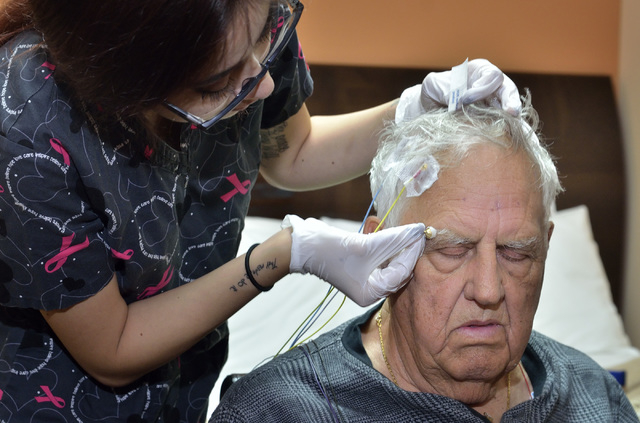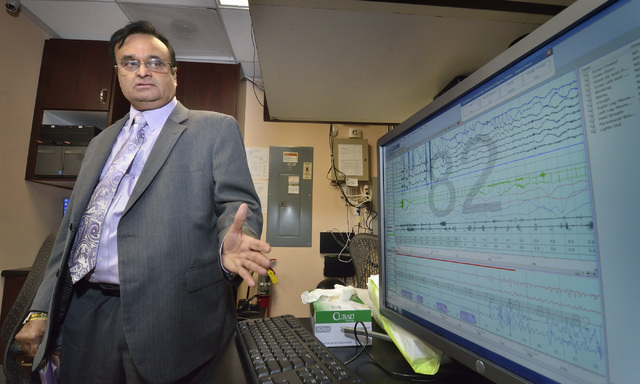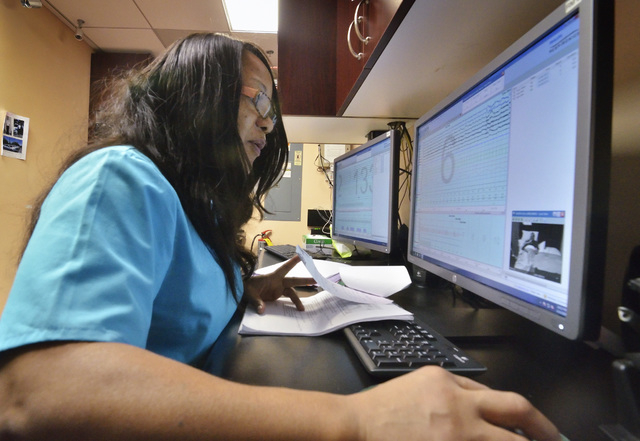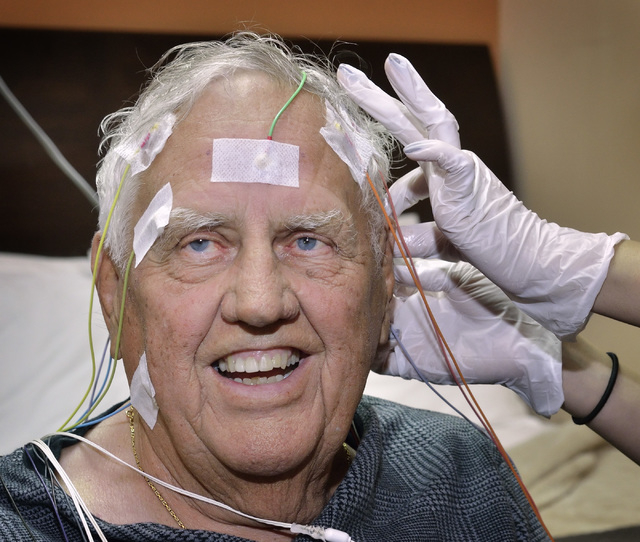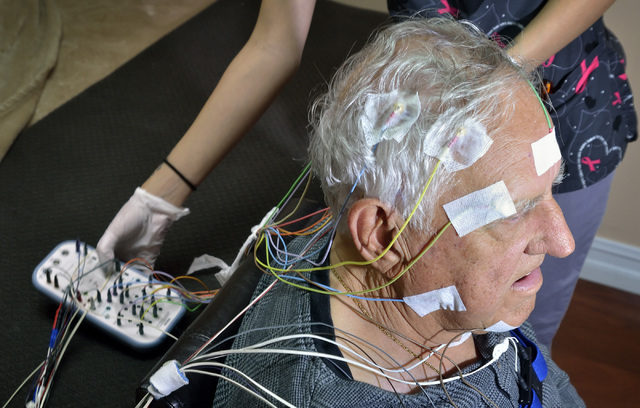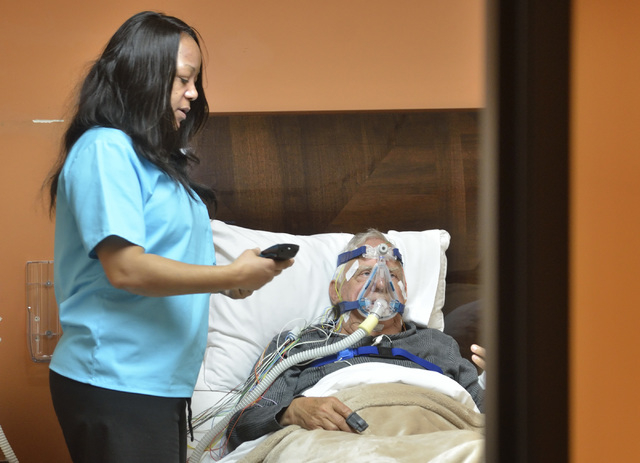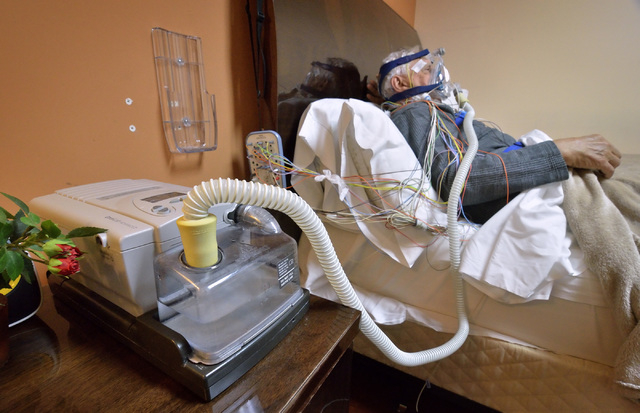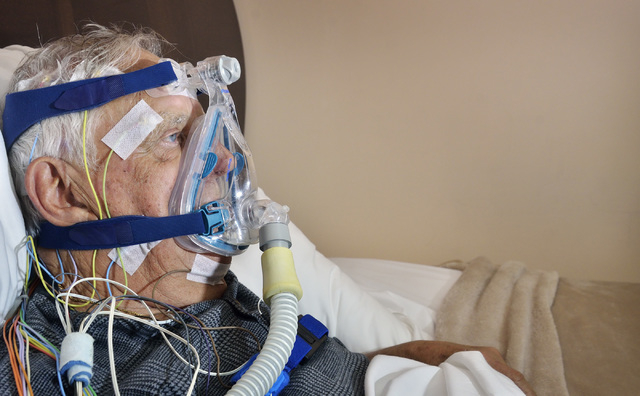Sleep apnea causes problems from fatigue to traffic accidents
Do you snore loudly, frequently awaken in the middle of the night snorting or choking for air, have headaches in the morning or feel tired throughout the day? If so, these are indicators that you may be one of an estimated 25 million Americans suffering from obstructive or central sleep apnea or a combination of both.
Sleep apnea is a serious sleep disorder where breathing stops and restarts. Obstructive sleep apnea occurs when, as you sleep at night, the throat muscles relax and the tongue falls back. These conditions create a blockage in the airway, and your brain detects this and awakens you. This scenario plays out several times throughout the night. With central sleep apnea, which is more rare, the brain fails to send proper signals to the muscles that control breathing.
If left untreated, sleep apnea can increase the risk of high blood pressure, because when you stop breathing adrenaline is released and blood pressure rises. Sleep apnea also reduces oxygen levels in the blood, which creates the risk for a heart attack or an abnormal heartbeat known as atrial fibrillation.
People with sleep apnea are more prone to become a Type 2 diabetic, because of developing a resistance to insulin. Individuals with sleep apnea are also at risk for a stroke and depression.
“Sleep apnea is one of our focuses in primary care management,” said Dr. Martina Mookadam, a family medicine physician at the Mayo Clinic College of Medicine. “It creates a very strong physical stress on the body. If your primary care doctor fails to ask you if you have symptoms, you should bring it up. Sleep apnea can happen at any age.”
Ron Lodder, 83, said his wife had to nudge him several times a night because he was snoring so loudly. He also found himself waking up, catching his breath several times a night. He said he always suspected he had obstructive sleep apnea, but it wasn’t until he underwent overnight testing, called polysomnography, in a sleep lab that his suspicions were confirmed.
Lodder went to see Dr. Rachakonda Prabhu, a medical doctor board certified in sleep medicine. At the doctor’s Sleep Center of Nevada, Lodder was nicely tucked in one night, but not before having a series of very sensitive electrodes attached to three regions of his head, under his chin, across the rib cage and lower abdomen, the legs and over the right and left eyes.
With lights out, Lodder drifted off to sleep, while a technician carefully monitored his oxygen levels, heartbeats and every muscle movement. The next morning, Lodder went home and anxiously awaited the diagnosis based on the mountain of data collected throughout the night.
Prabhu said it’s normal for most people to stop breathing from zero to five times a night and the brain wakes you up. But anything over that pushes you into the realm of sleep apnea, he said. From five to 15 times is considered mild apnea, 15 to 30 is moderate and more than 30 is severe.
“When oxygen levels go down, the consequences are that the body responds by releasing hormones that can cause your heart to go into atrial fibrillation that can cause sudden death,” Prabhu warned. “But not everyone dies in their sleep. Sleep apnea can cause other problems such as high blood pressure or diabetes.”
Prabhu said the dangers of sleep apnea are increased significantly if a person is overweight, already has hypertension, has a lot of fat around the neck — a neck size of 17 inches for men and 16 inches for women — is a male older than 40 or a woman older than 50.
Besides being a health danger to oneself, obstructive sleep apnea has been determined to be a contributing factor in national workplace and traffic accidents. A recent study published in Sleep, the joint publication of the Sleep Research Society and the American Academy of Sleep Medicine, found that drivers with sleep apnea were 2.5 times more likely to be in a traffic accident than people without the disorder.
The gold standard for treating sleep apnea is having the patient sleep with a continuous positive airway pressure (CPAP) machine hooked up at night. This consists of a mask or device that fits over the nose and mouth, which is connected to a motorized machine via a tube that gently blows air into your airway to keep it open.
A common criticism of older CPAPs is that they are too bulky and hard to sleep with. A newer, and less intrusive one-piece design, looks like a small bicycle inner tube that fits around the head and has two air holes that slip under the nose.
Besides snoring and waking up short of breath, Lodder went to see Prabhu at the recommendation of his heart doctor. He had been experiencing atrial fibrillation and was in danger of having a heart attack. Since using CPAP, the fibrillations appear to have subsided. And he hasn’t been snoring at night, which has been good news for his wife.
“I feel pretty much the same,” Lodder said in using his CPAP machine. “You just do it with your normal breathing. It’s very subtle. … They do a nice job over there (at the Sleep Center of Nevada). I’ll be back in six weeks for a follow-up.”
In a recent article in the Cleveland Clinic Journal of Medicine, it was reported that obstructive sleep apnea with CPAP reduces the 10-year risk of fatal and nonfatal motor vehicle accidents by 52 percent, the 10-year expected number of myocardial infractions by 49 percent and the 10-year risk of stroke by 31 percent.
In an April 2016 Mayo Clinic article, it stated that as many as a third of patients in primary care practices may be at high risk for having sleep apnea. The article also noted that the American Academy of Sleep Medicine recommends that patients obtain a sleep history to determine if they have sleep apnea as:
■ Part of a routine health maintenance examination,
■ Part of the evaluation of specific symptom complaints such as snoring, apnea and daytime sleepiness, and
■ During comprehensive evaluation for those at high risk (such as those with obesity, congestive heart failure, refractory hypertension, diabetes and stroke history).
George, who requested that his last name not be used, said he had not been sleeping well at night, was constantly waking up, snoring very loudly and stopped breathing several times each night. Two years ago, he decided to undergo polysomnography at the Sleep Center of Nevada.
“Dr. Prabhu said I was having a lot of interruptions of sleep — 35 to 40 incidents per hour of not breathing properly. I wasn’t getting good oxygen levels,” George said. “I started using the CPAP machine and it made a dramatic difference in my health.”
When George went to see his doctor for his diabetes, the physician said his health was now “amazing.” Prior to using a CPAP, George was taking pills and doing injections for his diabetes. Now he only needs to take a pill each day.
“My blood pressure is a lot easier to control now,” George added. “I get through the day a lot better. I work long hours, but now I can hang in there and don’t need to take a nap anymore. …
“No one wants to go to a sleep center and spend the night, but it’s no big deal. I highly recommend it to anyone who has, or suspects they have, sleep apnea. My wife is really happy now, too. The snoring is gone. She said I used to snore like an old bear.”
The American Sleep Association recommends that people who suspect they may have sleep apnea use what’s called the STOP-BANG scoring tool as a reference. This acronym stands for: Snore, Tired, Observed, Pressure, BMI, Age, Neck and Gender.
STOP-BANG asks these eight Yes/No questions:
1.) Do you Snore loudly?
2.) Do you often feel Tired, fatigued or sleepy during daytime?
3.) Has anyone Observed you stop breathing during your sleep?
4.) Do you have, or are you being treated for, high blood Pressure?
5.) BMI more than 35?
6.) Age — older than 50?
7.) Neck circumference greater than 17 inches for male or 16 inches for female?
8.) Gender – Male?
If you answered yes to up to two questions, then your risk of having sleep apnea is low; three to four the risk is intermediate and five to eight places you in high risk.
Dr. Martina Mookadam said you can actually see the destruction of white matter, nerve connections, during brain imaging of people with sleep apnea. These conditions improve, she said, when patients start sleeping with CPAP machines.
Mookadam pointed out that exercise and losing weight also greatly improves patients’ sleep apnea, and eventually they may be able to stop using their CPAP machines.
“Sleep apnea is very uncommon in people who are athletically active,” Mookadam said. “The increasing weight of people is an issue. However, 25 percent of people with sleep apnea aren’t overweight.”



